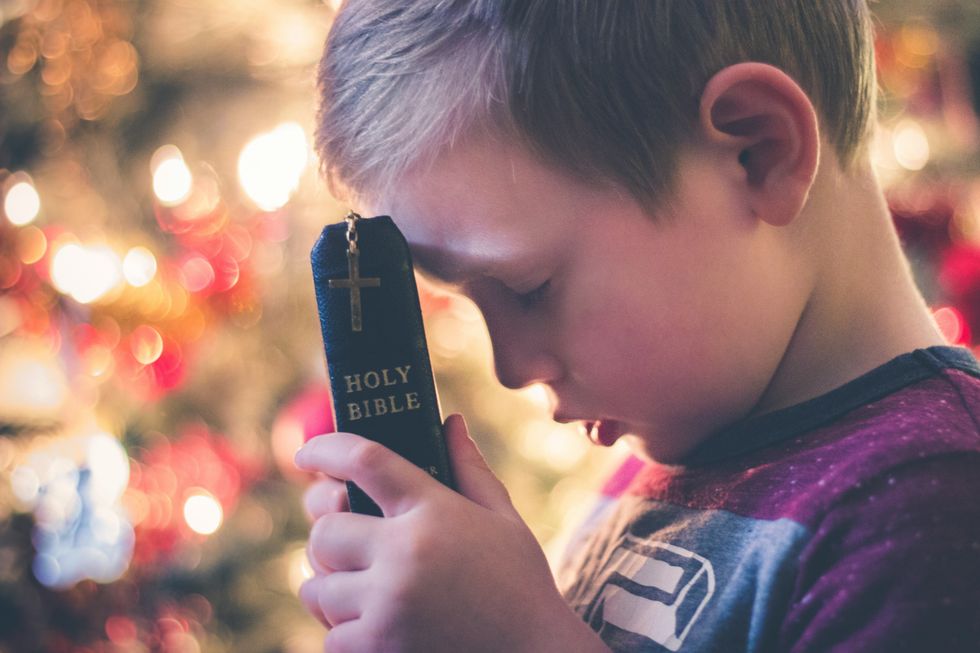Chances are, you have a costume ready to go or will be helping someone with his or her costume tonight or this past weekend, ready to suffer through some worthwhile cavities and perhaps reaching for your other pair of pants after that haunted house expedition; but how did the tradition of Halloween really become the way it is today?
Trick or Treat?
Samhain, an ancient festival held by the Celtics, involved lighting bonfires and people dressing up in costumes in order to ward off ghosts, although their horrifying costumes consisted of animal skins and handcrafted masks of animals rather than a morph suit bought from Amazon Prime. November 1st was considered the new year-- the end of summer and harvesting season and the beginning of dark and cold winter, often associated with death. Some time down the road, All Saint's Day, on November 1st, incorporated some of the traditions of Samhain, and the night before, October 31st, was deemed All Hallow's Eve, and today, modern Halloween in America!
Today's version of Halloween mostly constitutes of store-bought costumes, college parties, a massive influx of profit (Halloween is the second most grossing holiday, behind Christmas), cavities, and at the community level, kid-friendly activities including hay-rides, corn mazes, and other events.
Trick-or-treating bares similarities to England's early All Souls' Day parades, where families would pass out "soul cakes" to poor beggars in exchange for prayers for the families' dead relatives. The church encouraged the passing out of soul cakes in place of leaving wine and food for wandering ghosts, and children eventually took up this activity, called "going a-souling," and visited neighborhood homes.
Some other fun facts about Halloween include:
1. Anoka, Minnesota and Salem, Massachusetts deemed themselves the world's Halloween capitals.
2. In 2015, Americans spent $2.6 billion on candy alone. The top 5 were Reese's, M&M's, Hershey's Milk Chocolate bar, and Kit Kats.
3. The largest recorded pumpkin was 836 pounds and grown by Norm Craven in 1993. On a similar note, there are pumpkin carving competitions with strict rules, including that the pumpkin be under 24 pounds and be carved with at least eyes, a mouth, and a nose.
4. Day of the Dead is Mexico's counterpart of Halloween, which is celebrated on All Saints' Day and All Souls' Day (November 1st and 2nd, respectively). The Chinese have a Lantern Festival in which they hang dragon and animal shaped lanterns, believed to help guide spirits back to their homes on Earth.
5. The original jack-o-lanterns were made from turnips, and they also upped the creepy factor by a lot (pictured in the header). Jack-o-lanterns are named after a man named Jack in an Irish lantern who tricked the devil repeatedly, later being denied entrance to both heaven and hell. Being forced to wander the earth, he led people astray by waving his lantern.
To be blunt, I am not a huge fan of dressing up and going out into the cold for candy or to the local frat to celebrate. However, I am a fan of horror movies! Luckily, feeling scared in a safe, controlled environment (in my dorm room with a friend and every single light turned on for the next three days) can actually release endorphin and create that "feel-good" feeling... and what better day to justify scaring yourself than on Halloween night? The top five grossing horror movies in box office as of 2015 are:
5. Scary Movie ($157 million)
4. The Exorcist ($232 million)
3. Ghostbusters ($242 million)
2. Jaws ($260 million)
1. Sixth Sense ($293 million)
I highly recommend watching all of them to get into the Halloween spirit, although I personally will be cuddled up in my dorm room watching American Horror Story on Netflix.
Happy Halloween!







 Christmas and New Year gift card
Photo by
Christmas and New Year gift card
Photo by  butter cookies on plate
Photo by
butter cookies on plate
Photo by  boy holding Holy
boy holding Holy 









